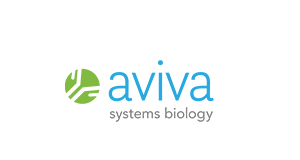Biotinylated CXCL12 Protein
Biotinylated CXCL12 Protein
Artikelnummer
AVIOPCB00014-5
Verpackungseinheit
5µg
Hersteller
Aviva Systems Biology
Verfügbarkeit:
wird geladen...
Preis wird geladen...
Conjugation: Biotin.
Description of Target: Chemoattractant active on T-lymphocytes, monocytes, but not neutrophils. Activates the C-X-C chemokine receptor CXCR4 to induce a rapid and transient rise in the level of intracellular calcium ions and chemotaxis. Also binds to another C-X-C chemokine receptor CXCR7, which activates the beta-arrestin pathway and acts as a scavenger receptor for SDF-1. SDF-1-beta(3-72) and SDF-1-alpha(3-67) show a reduced chemotactic activity. Binding to cell surface proteoglycans seems to inhibit formation of SDF-1-alpha(3-67) and thus to preserve activity on local sites. Acts as a positive regulator of monocyte migration and a negative regulator of monocyte adhesion via the LYN kinase. Stimulates migration of monocytes and T-lymphocytes through its receptors, CXCR4 and CXCR7, and decreases monocyte adherence to surfaces coated with ICAM-1, a ligand for beta-2 integrins. SDF1A/CXCR4 signaling axis inhibits beta-2 integrin LFA-1 mediated adhesion of monocytes to ICAM-1 through LYN kinase. Inhibits CXCR4-mediated infection by T-cell line-adapted HIV-1. Plays a protective role after myocardial infarction. Induces down-regulation and internalization of CXCR7 expressed in various cells. Has several critical functions during embryonic development; required for B-cell lymphopoiesis, myelopoiesis in bone marrow and heart ventricular septum formation.
Biotinylated CXCL12 is made using the enzymatic method, which has several advantages over chemical biotinylation methods. The attachment of biotin at a specific lysine residue within the C-terminal avi tag sequence is nearly 100% complete, and leads to a modified chemokine with functionalities comparable to those of the unmodified CXCL12 in calcium flux and migration assay. Combining with avidin analogues conjugated to various fluorescent labels, biotinylated CXCL12 is useful in studies on receptor identification, distribution, chemokine binding, and other cellular assays. They serve as great tools in visualization and quantification, and replace the needs for radioactively labeled chemokines.
Key Reference: 1. "Structure and chromosomal localization of the human stromal cell-derived factor 1 (SDF1) gene."
Shirozu M., Nakano T., Inazawa J., Tashiro K., Tada H., Shinohara T., Honjo T.
Genomics 28:495-500(1995)
2. "Identification and expression of novel isoforms of human stromal cell-derived factor 1."
Yu L., Cecil J., Peng S.B., Schrementi J., Kovacevic S., Paul D., Su E.W., Wang J.
Gene 374:174-179(2006)
3. "Nucleotide sequence of hIRH, human intercrine reduced in hepatomas."
Begum N.A., Barnard G.F.
Submitted (JAN-1995) to the EMBL/GenBank/DDBJ databases
4. "Polymorphism study of cell-derived factor 1 (SDF1) gene and their correlation with HIV infection in a Chinese cohort."
Zhao X., Zhang H., Lee S., Wong K., Zheng B.
Submitted (DEC-2004) to the EMBL/GenBank/DDBJ databases.
Molecular Weight: 10.4 kDa.
Product Format: Lyophilized.
Purity: > 97% as determined by SDS-PAGE.
Source: E. coli.
Description of Target: Chemoattractant active on T-lymphocytes, monocytes, but not neutrophils. Activates the C-X-C chemokine receptor CXCR4 to induce a rapid and transient rise in the level of intracellular calcium ions and chemotaxis. Also binds to another C-X-C chemokine receptor CXCR7, which activates the beta-arrestin pathway and acts as a scavenger receptor for SDF-1. SDF-1-beta(3-72) and SDF-1-alpha(3-67) show a reduced chemotactic activity. Binding to cell surface proteoglycans seems to inhibit formation of SDF-1-alpha(3-67) and thus to preserve activity on local sites. Acts as a positive regulator of monocyte migration and a negative regulator of monocyte adhesion via the LYN kinase. Stimulates migration of monocytes and T-lymphocytes through its receptors, CXCR4 and CXCR7, and decreases monocyte adherence to surfaces coated with ICAM-1, a ligand for beta-2 integrins. SDF1A/CXCR4 signaling axis inhibits beta-2 integrin LFA-1 mediated adhesion of monocytes to ICAM-1 through LYN kinase. Inhibits CXCR4-mediated infection by T-cell line-adapted HIV-1. Plays a protective role after myocardial infarction. Induces down-regulation and internalization of CXCR7 expressed in various cells. Has several critical functions during embryonic development; required for B-cell lymphopoiesis, myelopoiesis in bone marrow and heart ventricular septum formation.
Biotinylated CXCL12 is made using the enzymatic method, which has several advantages over chemical biotinylation methods. The attachment of biotin at a specific lysine residue within the C-terminal avi tag sequence is nearly 100% complete, and leads to a modified chemokine with functionalities comparable to those of the unmodified CXCL12 in calcium flux and migration assay. Combining with avidin analogues conjugated to various fluorescent labels, biotinylated CXCL12 is useful in studies on receptor identification, distribution, chemokine binding, and other cellular assays. They serve as great tools in visualization and quantification, and replace the needs for radioactively labeled chemokines.
Key Reference: 1. "Structure and chromosomal localization of the human stromal cell-derived factor 1 (SDF1) gene."
Shirozu M., Nakano T., Inazawa J., Tashiro K., Tada H., Shinohara T., Honjo T.
Genomics 28:495-500(1995)
2. "Identification and expression of novel isoforms of human stromal cell-derived factor 1."
Yu L., Cecil J., Peng S.B., Schrementi J., Kovacevic S., Paul D., Su E.W., Wang J.
Gene 374:174-179(2006)
3. "Nucleotide sequence of hIRH, human intercrine reduced in hepatomas."
Begum N.A., Barnard G.F.
Submitted (JAN-1995) to the EMBL/GenBank/DDBJ databases
4. "Polymorphism study of cell-derived factor 1 (SDF1) gene and their correlation with HIV infection in a Chinese cohort."
Zhao X., Zhang H., Lee S., Wong K., Zheng B.
Submitted (DEC-2004) to the EMBL/GenBank/DDBJ databases.
Molecular Weight: 10.4 kDa.
Product Format: Lyophilized.
Purity: > 97% as determined by SDS-PAGE.
Source: E. coli.
| Artikelnummer | AVIOPCB00014-5 |
|---|---|
| Hersteller | Aviva Systems Biology |
| Hersteller Artikelnummer | OPCB00014-5 |
| Green Labware | Nein |
| Verpackungseinheit | 5µg |
| Mengeneinheit | STK |
| Methode | Immunofluorescence, Confocal Microscopy, Cell Assay |
| Human Gene ID | 6387 |
| Produktinformation (PDF) |
|
| MSDS (PDF) |
|

 English
English





